
Marten Spangberg « Do they think the lengths of the pieces are an accident?”
Propos recueillis par Guillaume Rouleau
Publié le 29 juillet 2016
Swedish « performance related artist » Mårten Spångberg, besides animating four workshops with Asad Raza and Adrian Villar Rojas, has presented three performances during ImPulsTanz – International Vienna Dance Festival 2016 : Dawn, created in collaboration with students of P.A.R.T.S. (dance and research center founded by Anne Teresa de Keersmaeker), La Substance, but in English (2015) and Natten (2016). If Dawn, played for the first time at the Odeon theatre, was a choreography inspired by the solar phenomenon (sunset and sunrise) and by a 75 minutes sample of Drake’s song Hotline Bling, La Substance, but in English and Natten were more “rococo”. In these two performances, respectively 4h15 and 7h06 long, the relationship between choreography and dance is being rephrased by Mårten Spångberg through a scenographic “mille-feuilles”, an acoustic cocktail and a series of gestures introducing other relationship to the audience, other structures of choreography in which you can leave and come back as any time.
In La Substance, but in English, the stage set is a gold and silver aluminum patchwork of fabrics with numerous brand logos (Versace, Chanel Paris, etc.); a patchwork of clothes that the eleven performers wear and take off regularly; a patchwork of colors that the public can paint on a large panel, Mårten Spångberg leaning against it, his iMac on his knees, his Iphone within easy reach, connected to the soundsystem of the Kasino am Schwarzenbergerplatz where La Substance, but in English was performed. A polysemous title combining French and English which evokes the philosophical notion of substrate (the essence of things), and at the same time the narcotics which are presents on stage through golden cannabis leaves attached to bamboo stakes and through different liquids (weed in two horizontal glass tubes), bottles of soda and candies scattered all over the stage, thrown into the public. The substance is gradually spread out over several hours. As the French philosopher Tristan Garcia underlines in A first fragment for Marten, cotemporary experiences are governed by the notion of intensity: an intensity (sexual, gustative, cosmetic advertising – Dior Homme Intense – etc.) that questions the human experiences (as opposed to the intensity in physics), about what is subsisting and what is changing in those experiences and with which strength. The abundance of signals in La Substance, but in English are for Mårten Spångberg a way to generate unpredictable situations within established structures: the one of capitalism and the one of choreography (which Mårten Spångberg dissociates from the dance); An intensity, which in La Substance is associated to pleasure enjoyment and coolness.
The intensity of the experience is also found in Natten, the Swedish word for overnight, where it stands for an extremely intense fearful night, a night during which we could experience the “nothing”. Natten is an artificial overnight displayed composed by Spangberg in order to generate a nothing that cannot be named, which disrupts our experience as a spectator. Natten, at the MUMOK Hofstallungen, began with the crossing of curtains; two black curtains who seemed to cut this part of the old imperial stable (with its ceiling painted by Otto Zitko) from the rest of Vienna. We enter, without any dawn phenomenon, into the night – into a brown, dark green, silver cavern –walking along the walls of the room, the blankets that cover the floor attenuate the noise of our steps, piles of Natten books by Marten Spangberg are all around (Natten, Mårten Spångberg, 2016). At the far end of space, white and black clouds are projected in a continuous loop on the wall. Aluminum canvas are hanging from the ceiling. As in La Substance, but in English, Mårten Spångberg is leaning against a the wall, selecting the songs sporadically played, this time it is New Dawn Fades by Joy Division and In the Event of a Sudden Loss by Greg Haines we hear, instead of Diamonds by Rihanna and Lush Life by Zara Larsson; as in La Substance, but in English, phases of silence, of resting, of easy going interfere; but there is no glamour in Natten. Natten is about the dark part of our thinking, a point of non-understanding. “A Journey to the End of the Night” (Céline) with Mårten Spångberg and ten performers as our guides. I met Mårten Spångberg at the Café Liebling in Vienna to discuss La Substance and Natten (and to a lesser extent about Dawn) that put the cursor of the intensity on undetermined, but also to talk about Jérôme Bel, World of Warcraft, Cédric Price, Harry Potter and Kieślowski.
It is the Austrian premiere for La Substance, but in English a 2014 piece and Natten a 2016 piece. Did you adapt any aspects for the Kasino am Schwarzenbergplatz where La Substance, but in English has been played and for the MUMOK where Natten has been played?
No. (laughs) I’m very familiar with both spaces and even if the pieces that I do are very constructed but of course there are adaptations, especially with Natten, now it is in a place that is 30 meters long and 12 meters wide whereas a couple of weeks ago we did it in a room that was 17×17. I think about the work like this. It is this piece. It is very much like a theatre performance in that respect, but I also think about my work more like a visual artist in the sense that Natten can have many variations in the sense that like when an artist makes an exhibition for the Pompidou Center then they have a lot of space, then next time they do it in some Kunsthalle in Aubervilliers, then of course they have a smaller space and they will look at the audience to know how are they. So it is two different exhibitions but it may even have the same name. I’m interested in thinking that there are versions. You cannot work when you exchange a text with a friend, then you send the PDF and then after a couple of days you have written more about it and send another PDF, so there are versions that are more or less calculated. And this is not a matter of adapting to the situation, there is a little bit of that, but it is rather to undermine, so (you have) at least two perspectives at the same time, the understanding of something completed.
If you write for a webpage, this is a different form of publication than the writer of a newspaper. With the newspaper you’re dead, when it is out, it is out, than you have to suffer from it (laughs) whereas the web page, if somebody calls you back and says there’s a misspelling or an error, you can always change it. How do we think this in respect of performances? Is it a product but a product can also be transformative. Which is not necessarily that it becomes better and better but well, if we do it in Asia for example than we can’t go with the set design because it costs billions and so we maybe have to pick up a new set once we’re there but we don’t take it back with us because this would be idiotic. Or three performers are in some other job that is better paid, then we do it with a smaller group and so on and so on. So I’m thinking also, in respect of most of the productions, the way that we understand performances and for example say in pieces of some familiar choreographers like Jérôme Bel pieces, they are extremely set, they are factory work. So this piece should be exactly the same for somebody who has it in France, in Germany, in Finland and so on. A BMW 511B is everywhere the same and completely interchangeable. The experience of Jérôme Bel in the Pompidou Center is exactly the same anywhere else. Good bye! This I think is prominently old school and definitely politically unacceptable.
I’m interested in thinking about contemporary business. Instead of starting a factory and having workers there maybe instead we think that the labor that we start is a web magazine but it is also a platform for the possibility of this, and we also do concerts etc. And sometimes this brand is lower than this one, so I’m interested, not in order to become more neoliberal, but I’m interested in thinking and experimenting how can contemporary art product in a particular stage – think about the way contemporary business operate: in a factory, you have a lot of investment to build the machine that builds the car, then a long rehearsal process and then we trade them as a sustainable product. In the performance circulation that we have now (festivals etc.) nobody tours anymore but still people invest eight months in fucking making the show/job. We work for three weeks and then when we tour, we continue to work and if it sells it is great, then we continue to work on it, and if it doesn’t sell, because what we did that was fucking out, then, cool, we use that knowledge for something else. Think about a work, when we make an ass, and then we should present it to the audience, this could be overwhelming, instead we spend 25% of the money for to make a pilot or a better version, we test it on different kinds of audiences and then they say yeah! Then we make “1.0” which we know is crappy but it is one we know that we can sell and then we will see what the response is and then we put in the big money to do the marketing when we know that the thing is selling already.
You constantly update your performance.
Yes, I always update the performance! Maybe people don’t see it, it is not only how it looks, it is also how it circulates, how we think about the work.
And you try to have this consciousness from the audience of the constant evolution?
That doesn’t really matter. It is also okay to come in- like a television series, if you come in after three episodes it is also cool- if you don’t have a better experience of World of War Craft because you started with the version 1.0 you also get a great game experience and you know that it probably had a history. And if you are a nerd you will investigate in that.
La Substance, but in English lasts 4 or 5 hours approximately while Natten lasts 7 hours. Why did you choose these formats?
Precisely 4 hours 20. Usually it is not written and never ends up being exactly the time you indicate, normally it is 4h18 or 4h15 but the arrangement of the performance is 4h20 and it refers to weed smoking. Do you know that the international day of marihuana culture is on the 20th of April? La Substance is also all about getting in touch with the real thing, “la substance”. So the arrangement also refers to losing track or rationality. And Natten is 7 hours and 6 minutes. Natten is a performance about Satan and hell and the fearful basis, the dreadfulness, the darkness, the deeply unknown, the horrendous, anyway, yes, the performance is long.
And do you consider La Substance, but in English and Natten like two connected or two independent pieces? While La Substance is a great celebration of being together without a cause as mentioned in the booklet by different liquids, tissues, music, Natten is a reflection about the night and the enlighten part of the night. So are the two pieces connected for you or two different approaches, the dark side of Martin Spangberg and the bright side? (laughs)
Exactly! It is all psychological. I went to my shrink and then La Substance came out and then Natten came out and now I feel that I am ready to make good Jérôme Bel performances again with a long corporation and dynamic (laugh). No, seriously speaking, they have nothing to do with each other but I made them happen. I don’t know if I made them but I made them make themselves. You don’t need to see them together, they are definitely not like some Kieślowski film, you know. They are not siblings. They don’t connect and you don’t have to see number one to see number two. At the same time they have in common aesthetic features, not so much in the sense of display but they share an aesthetic landscape. Then I didn’t do it deliberately but it is somehow La Substance is the beach version of the night. It is in the day and it is colorful and celebratory all over the place and crazy and smiley and you feel the community and togetherness and you can sing along. Natten is very withdrawn. It is a performance that you experience very much alone even if there are 200 people in the building. It is a lonely show. Whatever it is that I do, I avoid words or approaches such as interpretation or reflection, but I am rather interested in non-reflexive situations, in a productive situation instead of interpretation, when I interpret something then I localize that something. When I go to the museum and I make an interpretation of this painting then I locate it. It must be 16th century, French, you can see that it is a traditional portrait… under these economic circumstances. We can put it in the layouts of art history, no problem. Interpretation is the matter of making something harmless. Reflection is something that I do from my position. Of course I can interpret everything by saying “it is shit” for example. This is “nothing”. It is a matter of dissolving the urge or desire for interpretation in favor of the possibility of an experience to witness. As a spectator I start to produce forms of language.
Do you follow any method when dissolving anterior forms of performances?
Yes, but I think you can’t do it by deciding. Let’s go to the studio and dissolve form. Then we’ll bring a toolbox that we’ll use for this dissolving but since tools know what they are doing, they also know how they dissolve so they will always dissolve in a reactive kind of way. There need to be other formations that offer a possibility for this dissolving of formation, of form, of reliable and determinable experience.
My job as an artist is to take my job serious. What I do is indeed to identify that I am not a worker, but I engage with praxis of dissolving the available for the possibility of something else. What artists do is to make the world come to an end, it is not to make it a better place. I don’t mean to come to an end as a sort of tsunami or volcano, but to come to an end in the sense of how we can experience the world and what is an experiencing agent. So we’re seeing this in the respect of Duchamp for example, what he does with the ready-mades (the bottle and the fountain) is basically that he makes sculpture come to an end.
The moment we recognize the bottle as a sculpture we have completely transformed what a sculpture possibly can be, both after and before Duchamp. So what Duchamp does is to make the world of sculpture come to an end. When we have that experience, we have to reformulate our understanding of sculpture not in respect of what we knew before but in respect of what we only now know about what a sculpture necessarily needs to be. In this respect I can’t do this as a worker. Work is something determinable, then there are maybe some side effects, but I’m interested to withdraw from wanting to be a worker. Art must not be qualified for how it works or what work has been introduced to it. Art has to be judged in respect to how it has made something come to an end.
And how are you doing this in La Substance and in Natten?
I have no idea! (laughs) But to think it in this way: What I do in my studio, in my head or in my office is to do this dissolving practice in a way. When I make the piece that is for example in the Kasino [La Substance], I know everything about that piece. Which of course I don’t. Every day is different depending on the audience, the weather, my mood. The piece is completely set but it is set in a way that is not there to be in any respect convincing or guiding, nor is it there to be unconvincing or unguiding. It is there to be in difference to the perspective of the individual spectator. It is not there to confirm you as cultural consumer, neither is it interested in being confirmed as a dance performance, it’s equally happy. There is no guarantee for anything. But it is constructed as a way of withdrawing from the possibility of being located or positioned. It is there to never become a “one”, it is never a conceptual formulation. It is never conceptual at all. In a different way, it is not a matter of making the decision whether you found the performance good or bad; is it sushi or sashimi. The aim of the performance is to provoke the audience for the possibility of the production of a choice, not the taking of a choice (sushi or sashimi) but the production of a choice. There are no criteria available for that production to happen.
Could you develop about the display of this experience?
La Substance is a sort of superabundant, superimpulsed incompatibility. There is so much information, so many surfaces and signs and signifiers that basically the viewer will suffocated if he doesn’t make a decision him/herself. There are so many stimuli or non-stimuli that most of it just goes besides. And it doesn’t matter- we are completely non-focused. It is not like electro shocks, after four of them you will really be kaput. It is a matter of an endless flux of information, and most of it miss it but that’s how it needs to be. Cedric Price, the British architect who worked in the AA (architectural association) was more of an educator. He was the architect of the “fun palace” in the 60’s. He proposed that the task of the architect is always the aim to miss, to fail for something. But then in a lecture that he gave in the AA 15 years ago he talked about the relationship to builders and commissioners and he said this sentence: “the task of the architect is the aim to miss”. And, out of the blue, he adds : “…and obviously the zone of the aim to miss is pink”. And there it becomes a little bit complicated, but one way of understanding it is that pink is not a clean colors, it is not signifying strength, it is weak, womanly, definitely not used by any military regime or Coca Cola or convincing brands. So the aim to miss is also the aim to miss oneself in the zone of the undetermined, right? If you want to aim to the undetermined zone you also have to make sure that your aim to miss is also a undetermined aim. That is something that I found interesting to think about.
It makes me think about your choice of the popish scenography and choreography in La Substance. Why did you choose to treat some topics that we just have talked about through pop aesthetics and a very specific kind of pop, a very contemporary one?
I thought, why is it that dance performances are always so fucking boring? And why is it that the costumes, the hairdos, the makeup and the set design are boring? It is always reduction! Instead of being reductive, when you think about conceptual choreographies, they are all about reduction. Boring! Instead there should be makeup, there should be hairdos, there should be glitter and gold and weeks and and goo and coke diet and Luis Vuitton and all of it at the same time. The understanding of contemporary that the contemporary dance has is a contemporarity that first of all I don’t think of as contemporary at all. It is deeply modernist in its understanding, maybe it is deconstructive in its methodology but as expression it is always deeply fucking deep modernism to the extent that they don’t even know about it. Jérôme Bel is a post-modernist that dresses up like a modernist and prominently. He wants to be recognized as the artist. He identifies with Andy Warhol as the last one. They love the heroic artist. And what they do is to make an “oeuf” (egg). Fuck that!
Do we need a lot of props?
I don’t need anything.
But is the publicity, as the one you use for the scenography of La Substance, essential to escape from the boring?
Not at all! We can use whatever, but this one, La Substance, but in English is a performance that wants to be as contemporary as possible in the most conventional way but still not deliver a conventional experience correlated to these conventional codes. But it is absolutely not interested in being special. It should be totally ordinary. However, in combination these ordinaries become perhaps something that doesn’t correlate in your comprehension. For example, pop music, except of very rare examples, is used only as semiotic examples or as a way of showing that now it is “party time” on stage. It is a kind of waste in time. I thought for a long time, how could I make this show where there could be pop song after pop song after pop song and people would love it and I would love it. And one of the problems is, if you put on Rhianna and she sings « Diamonds » or if you put on Donna Summer and she sings « Upside down » then it is a semiotic text situation that you will look for. This is restitutes the conceptual times of the 90’s. Jérôme Bel The show must go on, that’s what people do on stage, kind of a conceptual tautology. This is not a good idea. And then exactly in La Substance there is not pop music played from the stage to the audience, but it is pop music played by a guy who sits in the audience and sings along with Rihanna. So with him singing on top, that is a stronger proposal than the proposal that the semiotics of « Diamonds ». It is stronger that he sings then, be Beyoncé or somebody else, and in this moment, pop could function. I thought: “Why should dance performance always be with music that I don’t want to hear at any other moment?”. When I go teaching the students, where they warm up, they always have the local pop music. So let’s make a show with it! And then I thought if there is pop music there is at least something that the audience can like because everybody definitely loves Rhianna. This is the good thing- where the audience is not there to attend a performance but starts to have a kinesthetic reverberation with the situation. Normally the music in performances is from the stage to the audience, now it is from the audience to the stage. So the man singing in the audience is also a kind of permission for the audience to participate in their fantasy in the show perhaps also with movements.
Concerning Natten, I was wondering about the relationship between the performers and the audience. Is it the same approach with the music, etc.?
No, La Substance is about abundance and Natten is about withdrawal which doesn’t mean that it has low volume or lights or minimal music, there are a lot of signs. It withdraws so you can never locate it. Of course it is a dance performance in Impulstanz but it also withdrawals. If La Substance is a play about the abundance of information in favor of the melting of this information into a kind of substance to which you have to make choices as an individual, Natten is a matter of withdrawal into the “unknown unknown”. So it is not a matter of showing the unknown as something that you should be scared of – decapitated people, rotting corpses, vampires or zombies, people with chainsaws – in Natten there is nothing like since these things are the “known unknown” or what we have in horror movies, whereas I was interested in an unknown to which there is no language. I want the audience to have a sense of fear; but not of something but of the lack of something. It is not the fear of nothing, it is the fear of nothing’s nothing because nothing is already something. There is nothing in this cup but this is also something. What we want to awaken in Natten is nothing’s nothing.
Like a metaphysical experiment..
Exactamento. La Substance is also metaphysical in a Greek sense but Natten is metaphysical more in a contemporary, speculative form of metaphysics. Or even worse like in Greek. La Substance, but in English is of course utterly stupid. The substance doesn’t really need a translation; it is shit, right? We know it. « La substance » of course cannot be called that so I added « but in English ». Neither could Natten be called « The night ». Natten means in Sweedish « the night » but the thing is that in Sweedish you have the article in the last letter “n”. So, « nuit » is « nat » and « la nuit » would be « nuila ». Ant Natten can’t be called « la nuit » or people would think that it is a piano piece. It couldn’t be « la notte » then it would be a film. Natten is not scary either but it has a very particular sense, it is a Novalis kind of night and it is romantic and fucking fearsome. It is so fucking fearsome that it doesn’t even has to happen during the night, it is Natten in itself. It is the night in you, the eternal night… My work is never ever about something, it is something. Journalism is always about something, theatre is always about something, but dance must never be about something. It is not nothing, but it is never about.
How do you try to represent the nothing on stage if you think that the nothing can’t be represented? Do you think the stage is the best place to represent the nothing?
Certainly not. I think it is the worst place and that’s why I decided to choose it. And I don’t think one can feel this. Nothing’s nothing is not fellable. Nothing is fellable but nothing’s nothing for sure not. It cannot be felt nor can it be experienced but it expresses itself as a sensation or it can be affectively flourishing in your body. In other words it is an experience to which there is no naming. You can only know that you have the experience, but this experience is not something. It is the experience that is the everything else or its own emptiness. Again, totally redundant end endless. But I am exactly interest in that because what do you do with this affect to which there is no surface or attachment? The work that I do is not about any politics, it definitely participates in more or less elegant contemporary regimes or politics or economy. La Substance is from one perspective a celebration of capitalism, totally, but that’s not all of it. It is also the melting of all the signs, a sort of reappropriation and recontextualisation.
But nor is my performance a political critic but I think because I’m convinced that contemporary capitalism has managed to financialize language to the extent where language cannot be a tool or an opportunity for the possibility of insurrection or for a revolution or for another kind of thought or another kind of systematic. But an experience that only refers to itself as its own emptiness is one that has no proposition. There is only fear or bliss. I also think that in this moment it opens for the possibility of production of a contingent character. It gives the possibility for the production of a thought that is not associated to anything but can show up. And it is not a matter of displaying metaphysics for the audience. My intention is rather, through withdrawal (like in Natten), to open you for the possibility to have an encounter with a localized metaphysics or a localized absolute. In the spectrum of that moment, there is also the possibility for a production contingent. Something can show up but it’s absolutely non-correlated. If so, that might be absolutely the conventional way but it might also be the first moment of an entirely different way of being human, or an entirely different way of making sure that this world comes to an end. But the chance to do it in language in our ubiquitous capitalism doesn’t apply. Capitalism (not the state capitalism) cannot be overrun through any other means than giving up our knowledge, subjectivity and navigation.
In this reflection about the capitalism a major issue is the use of new technologies (references to the usage of cell phones, skype, facebook on stage)..
It’s a way to coming back to “turn off your mobile phones”. No, please don’t. The dance experience is in the capitalism but what it generates is the possibility of an experience that is contingent in that capitalism. I don’t think that capitalism becomes less evil or exciting if we turn off the mobile phone when we go to the theater. Turning off capitalism isn’t going to bring it away, it’s rather a kind of acceleration if you want : “No, let’s keep everything on and see how disturbance and interference can generate”; a bringing together of chains of signifiers, that are strongly reliable or completely incomprehensive. There are different kinds of monsters: the monster of Harry Potter, the monsters in the Lord of the Ring, the monsters in poststructuralism, etc. There are always hybrids. Half an eagle and half a lion, that’s Harry Potter monsters. All these monsters are surprising to begin with but then they are just conventional. It’s just a half a salmon, half a princess or half a frog, half a prince. They can either be on top of each other or in time of each other. Boring. Ultra fucking boring. These monsters are surprising yet conventional. What we want is a monster that is ordinary yet overwhelming.
In Natten there is nothing weird happening but the experience should be such that I cannot name it. It withdraws from being named and in this way it also needs to withdraw from becoming separate. It’s not this part and that part and that part. It doesn’t need to be the first part and the second part. Well, the first part was scary then of course the second part just looked like a lion so that we know how to get rid of it. And at the same time it’s neither a one thing performance because you would also need a dramaturgy, a tension. It’s very rare that somebody can retell the show. This sort of ordinary yet overwhelming, that’s what this experience is, for which I don’t have any name. I like when the audience comes out of the performance and one friend says to another “That was kind of really quite …” and the friends says “Perhaps…”. We were there and we need to talk about the performance but we don’t know what it is because we have no words for it. Instead of going for diner after the show in order to be brilliant, elegant, exquisite, sophisticated with our interpretations of saying the performance is the translation of the second chapter of Plato. No. That is what we hate! What we really want is the audience to go to dinner together because we have become so stupid that we don’t know how to go home. We have to talk. We have to go for a dinner because we have to talk about this, because I don’t know what it is. I can’t go home. We have to get drunk. The only time you can go home without knowing what it is, is when you go home with somebody and you’re so drunk that you don’t remember. This is what we need.
Is it something that has completely disappeared from performances today?
The only dance I have trust in or feelings for is French dance. Mark Tomkins for example. Jean Claude Vernant is also someone that I find quite fabulous as a performance maker. Cecilia Bengolea and François Chaignaud they have a tendency but they are so good business men that it usually disappears a little bit. For me, there are two kinds of artist and I don’t want to be one of them. The one, every work is an undoing of the legacy of the previous one. Xavier Leroy would be an example for it, the expression of the work changes but the underlying methodology. The other kind of artist is the one that invents a sort of recipe but then he changes the color of the cake. It is quiet easy to end up there. This year is about Egypt because they have their thousandth anniversary and so you can tour and show the work, which is good. The system of choreographic centers made that tendency a little bit too available. I have been very busy in choreography for 20 years expanding the understanding of choreography, detaching the choreography from dance to be a technology rather than a tool box to make dance, a technology that can approach the world. We have to have a choreographer when we make coffee see how it should be set up, different choreographies with different social setups. We can use the producing capacity of choreography and it’s analytical one. If I write a book or make a film, I need to make a decision which is, “do I do this as a film maker or do I do this as a choreographer that uses the medium ?”. It’s two completely different things.
Choreography organizes. Choreography sets up structure. I have made the effort of saying choreography is something autonomous to dance, which doesn’t mean that they cannot be correlated with great fun, but dance isn’t supported by choreography. You can also use dance for other structures. Right now, I’m interested in the dance part. Then years before I would come to ImPulsTanz to present choreographies now what I’m doing is “dance performances”. They are not performances, they are “dance performances”. Dance as something that we draw from structuring. Choreography is in a way something that domesticates dance. But can we think of a non-domesticated dance which again refers to a wild dance to which there is no applicable structure, meaning that it is the experience of dance as dance; but dance as dance is also an empty experience otherwise it has a structure. The experience of dance is the experience of oneself experiencing experience. And this moment can have no structuring, that’s what Natten is about. It is the production of the possibility of an experience which refers only to itself through the means not of choreography, although Natten is choreographed, but it is a choreography that may allow the withdrawing from structure. So it is rather choreography as a giving up of the grant or generosity or whatever.
What was the feedback for La Substance and Natten?
La Substance is made for an audience that grew up with Internet. It’s made for an audience that has not known scarcity. It’s made for an audience that doesn’t remember Cold War. It’s made for an audience that has grown up in composed families; that has grown up in a situation where you don’t educate yourself in order to get a job but you educate yourself because there is no work around. So you stay in education. It is done by people who have understood mobility very differently than a generation like mine that is from the sixties, or earlier. So young people, people born after 1980 are very happy about the piece and are very benevolent, saying that as an experience it is overwhelming but also that the dramaturgy is very differently thought in the sense that it is not mono climatic, it’s superimposition rather than one after the other, abundance, rather than a sort of conceptual dance, sort of a subtractive attitude. You don’t miss the discursive part or what it means.
The piece was also a reaction to my observation that all dance pieces are so fucking grey. Why aren’t there any costumes? Why aren’t there fabulous outfits? Why is there no hair, no makeup? Why is the set design always so sadly boring? So it’s all a matter of making dance visible. Usually the way of making dance visible is white, male, heterosexual, Christian, academic, institutionalized, efficient, etc. and I wanted to make a piece that dealt with totally different opportunities and at the same time the fact to slow down the quality of the performers, it’s also a way of withdrawing from personality and a sort of dancers dancing and dance is not more important than the bear glasses hanging over or one or another song or one or another mystical, chemical transformation happening, because – it’s not that I am against identity – but I’m interested in making works that don’t deal with identity or whatsoever. In La Substance, the whole piece is about melting. La Substance is all a matter of making a situation where here is an object, here is another object but I don’t know where they start and stop, where the outskirts of an object are. With all this melting and how the whole dance is constructed towards these improvisational part close to the end where people are dancing around with seven different songs. In a certain idée there is a climax there but I think that this climax comes way too late and there are many different ones. The breaking of the bear bottle is also a kind of climax and the big dance is another kind of climax. I was interested in making a dramaturgy that doesn’t follow up a sort of heteronormative understanding.
Anyway, people were super happy about the piece except a few people who seem to think that if you don’t make a disclaimer or if a dance is not an open critic of capitalism then it’s a bad dance performance, it’s an evil dance performance. This is a bit frustrating or surprising that certain people have such a constipated approach. If someone critics the pieces saying “it’s banal”, it’s like a kindergarten, like a children party, doesn’t he or she see a certain other level? Obviously the piece is dealing with a certain kind of innocence, a certain kind of childishness, a certain kind of idiocy but all of this is also smokescreens, right? See behind A LITTLE BIT. Because what they do is basically to say: “it’s a serious politic critic” or “it’s Anne Theresa” [de Keersmaeker].
Concerning Natten, the critics were more homogenous. There is this brilliant critic in a newspaper: the journalist said the piece is great but when you have to sit on blankets for seven hours it becomes unbearable. How can you be so fucking bourgeois that you don’t stand up? Go for a walk then, idiot! The piece is seven hours. If you go for diner during one hour, you don’t miss anything, I mean you miss something but that’s okay. When you come back everything is the same and at the same time completely different. If I wanted you to have a comfortable position, I would of course have put fucking double beds there. Now you should understand that it was not a mistake if there were no mattresses. I think that one of the most important things in my work is that I am producing new kinds of audiences rather than using audience as we know it in order to look clever.
Also there, with a younger audience, it seems that Natten created quiet intense impressions. You have people saying that it was a wonderful experience, with a smile on their face and other people saying that it was great but that they definitively don’t want to go back there because what they experienced was so dark; basically it opens up people. A lot of people cried but at the same time a lot of people slept, which I think is great. Two guys were sleeping next to me, sleeping as a couple which was great. When do you do this and feel confy while being next to another 65 people? Natten is a sustainable show. We did it in Belgium in a church, in Italy in a gym and in Norway in a classical theatre hall. Natten seems to be a game changer. Somebody said to me that he got interested into dance because of a conceptual work at the end of the 90’s and that since then nothing interesting has happens until Natten. And this was an academically and scholarly trained person. He said that this was the first time he had seen something where he cannot immediately sit down and write something about it right away.
Regarding Dawn, could you tell me more about the choice of the music (cyclical sample of Drake during 75mn), the choreography and what you wanted to express with this piece?
Basically it’s a great song, especially without singing. It’s a piece that is supposed to be minimally interesting. It should be interesting but minimally interesting. Hotline Bling is exactly that. It’s minimally interesting, especially if you play it sixty times in a row but it is still something that you sit there after fourteen times. Or, just go home and I’m fine. Why does every fucking dance performance either have a Tchaikovsky’s symphony or an exciting music? Hotline bling is there to be minimally interesting and to make you think: “Here nothing exciting is gonna happen”. So now, instead of expecting something exciting either ok, fine, I’m leaving, or things maybe start to show up in this landscape that make it worth to stay. Hotline Bling on repeat, the film by James Baning, is of course also minimally interesting and then the dancing is made out of six materials that are again minimally interesting but there is also a lot of construction that makes something appear, something go away, a new constellation comes to force, things that happening in the shadows of each other. The story that I hopefully never told you before but when I was little I went with my mother and my grandmother to the beach often in the fall and we went to the beach just to see the sun going down – we never saw the sun because everything is grey anyway – and the way it was disappearing in the dark. When it was dark, we still know that the waves are there and the sound is there and we could stay for a really long time and this is how Dawn should be: Minimally interesting, being there with a bunch of people, or in couple but we don’t really need to talk we know each other too well and the sun is going down and the waves are still there, the dancers are still there. It is a place where I am allowed to have thoughts rather than being told what you think. 99 ou of 100 dance performances are so keen on telling the audience something whereas I think that what makes dance so exciting, so extraordinary, is that it can just be there, like a tree. Super. The best ever. But we have to be very careful about how to make those proposals, how to organize the making visible of indifference. In the piece, what becomes visible is an indifference. It doesn’t matter in this piece if it’s after five minutes or after fifty five minutes. It’s just there like a tree. It’s seventy five minutes of suspense because nothing is really going on. It’s very scary in a way. At a certain moment what do you hold on as a spectator?
Next I want to make a theater piece. I think that it’s too easy with dance now; the next thing is to conquer language. I grew up with television and television had a ‘tableau’ so you could skip through the different channels, one channel up, one channel down. This sort of dramaturgy is very different now. Now we watch television and you are on Internet and internet has a dramaturgy without tableau, it’s individualized, which can be bad, but somehow you’re making decisions, you’re making choices on different levels. With The Internet, La Substance and Dawn the feeling that it should provoke and how it’s done is like an internet dramaturgy: they have associations but they are not necessarily in style.
A zapping generation..
Exactly, and I wanted it to be like this, I want those people to see it not people that grew up with television. I want my work to be seen by the future and not by the ones that have already decided to die. Why should dance not be contemporary? Contemporary dance is not so contemporary. Why doesn’t it treat Internet while other art forms have done it? When artist have already consumed it and thrown it away? Dance in this festival seems to be something that was created in the fifties. Horrid. And the internet proposes different kinds of attentions so “How are we attentive when we watch youtube or when we hang out on the web?”, “What are the understandings?”, “How do we comprehend stuff?”, etc.
To tell you the truth, my aspiration is to do not just high culture but super high culture. The aspiration is not to do popular culture or alternative art, no. The work that I do should end up in the Paris Opéra. I mean or at least, it’s the Paris Opéra that I want to change with this work. I don’t want to be on some Indie label or whatever. The others, at the Opéra, they put more of the same of the old. It’s still very strongly bourgeois. They change the semiotic but they don’t change the grammar. I think Bob Wilson changed the grammar of the opéra. I think Stockhausen changed the grammar of music. I think Le Corbusier changed the grammar of architecture together with Ludwig Mies van der Rohe probably. Cunningham changed the grammar of dance. The common understanding of Cunningham tries to make him not have changed the grammar. So we read Cunningham absolutely wrong. It was not a reaction to Marta Graham that made him do what he did, it was an altogether story. It was necessity that made him do what he did and being the individual he was he had to do it with John Cage. And then it was a matter of thinking how can I not betray my sexuality and the person that I am without being excluded by the uptown dance context. If he had done anything that smelled gay he would have been kicked from New Jersey and he would never have been seen again. So I think that what both of them did was a kind of negative politics. So instead of showing camp gay queer stuff what they did was to go formalist : away from narration, away from composition, away from statement, away from hierarchical collaborations, so these kind of Cunningham pieces they don’t state themselves as gay but they withdraw from the possibility of heterosexual capturing.
Interview conducted on July 23th as part of ImPulsTanz – Vienna International Dance Festival. Photo © Beniamin Boar.
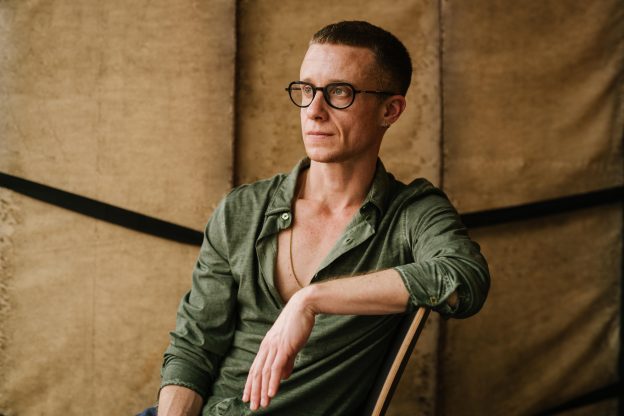
Pol Pi : Dialoguer avec Dore Hoyer
Entretien
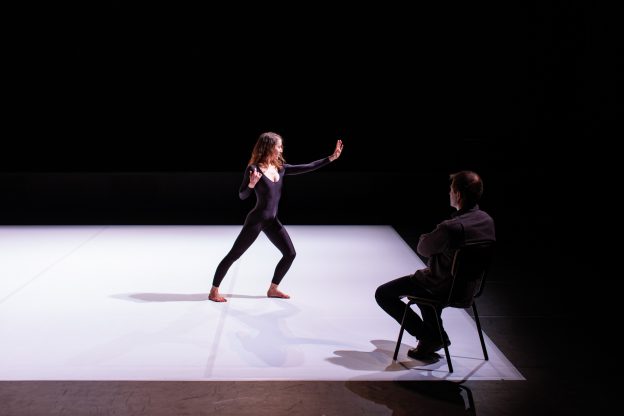
De Beyoncé à Maya Deren : la scène comme machine à rêver
Entretien

Jonas Chéreau, Temps de Baleine
Entretien
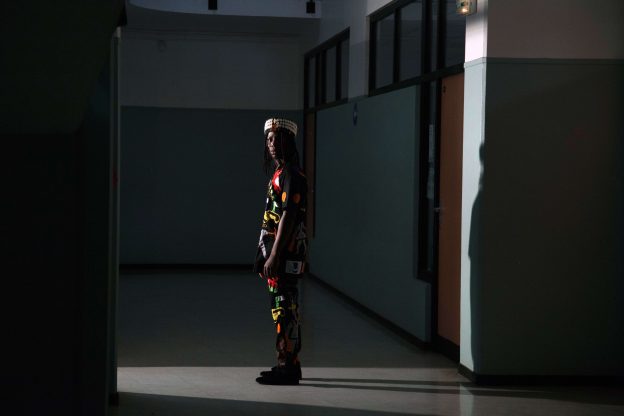
Betty Tchomanga, Histoire(s) décoloniale(s)
Entretien
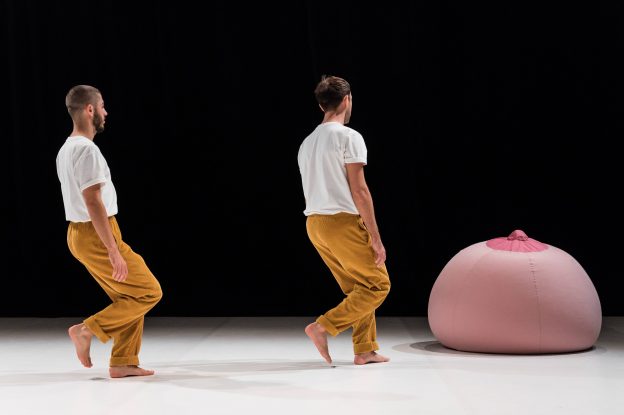
Marion Muzac, Le Petit B
Entretien
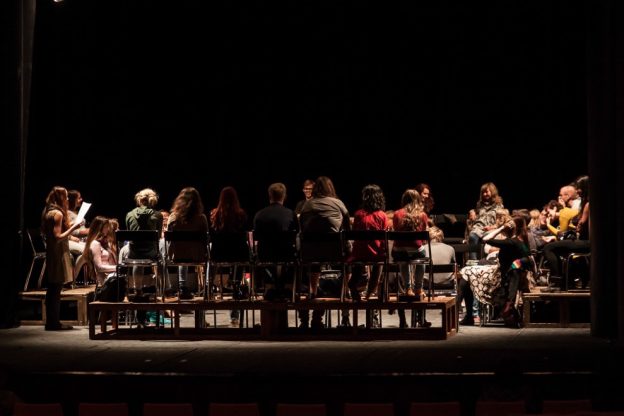
We Are Still Watching : le théâtre entre les mains du public
Entretien
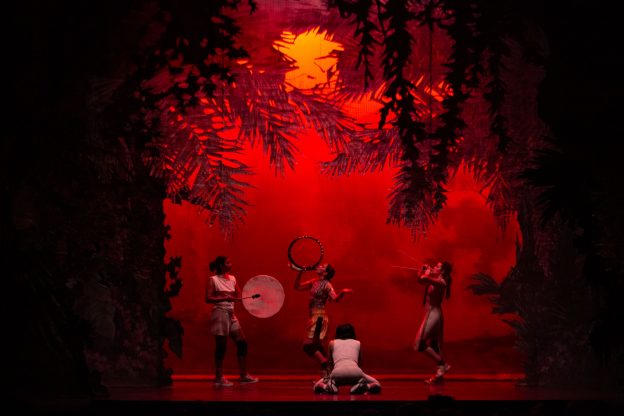
Amanda Piña : Danser contre l’effacement de l’histoire
Entretien
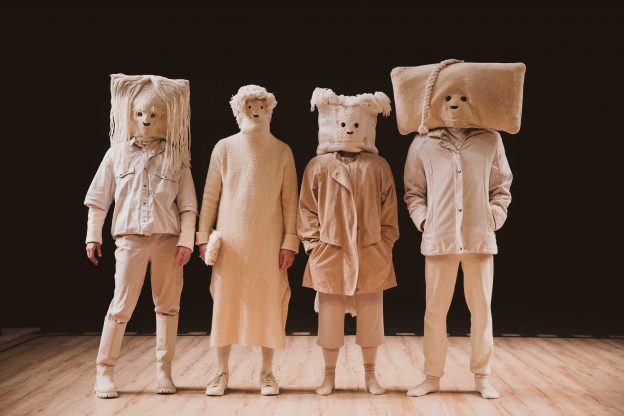
Old Masters : Faire maison commune avec l’imaginaire
Entretien
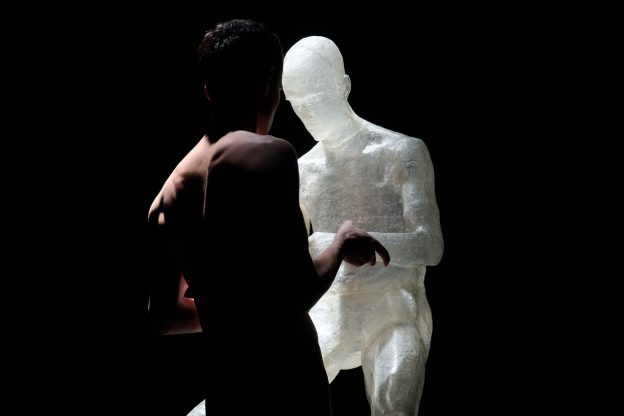
Georges Labbat, Self/Unnamed
Entretien

Bouchra Ouizguen, Éléphant
Entretien
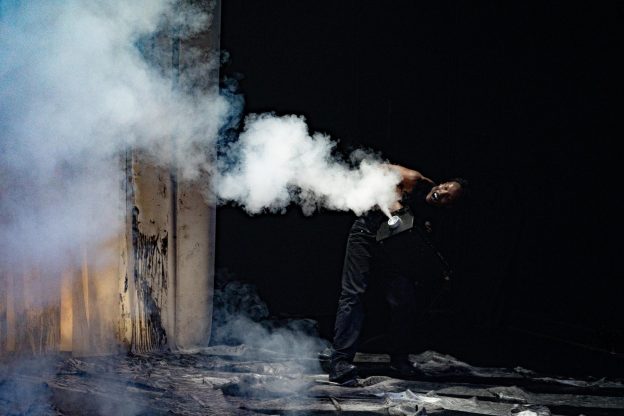
Cherish Menzo, D̶A̶R̶K̶MATTER
Entretien
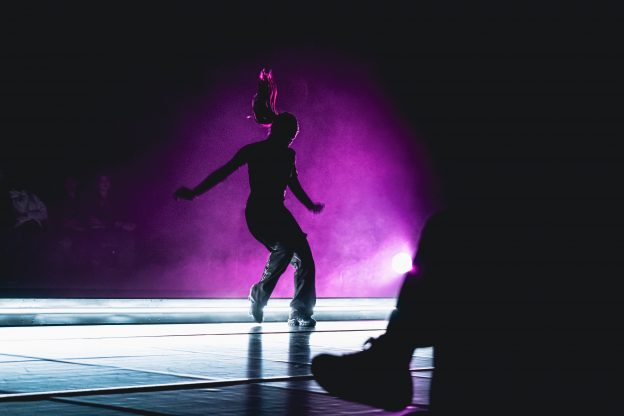
Solène Wachter, For You / Not For You
Entretien
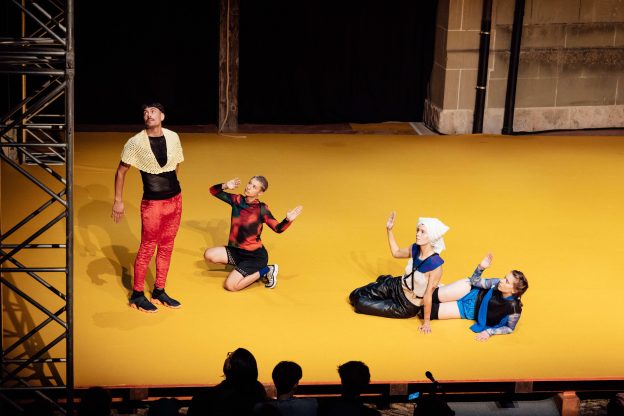
Collectif Foulles, Medieval Crack
Entretien
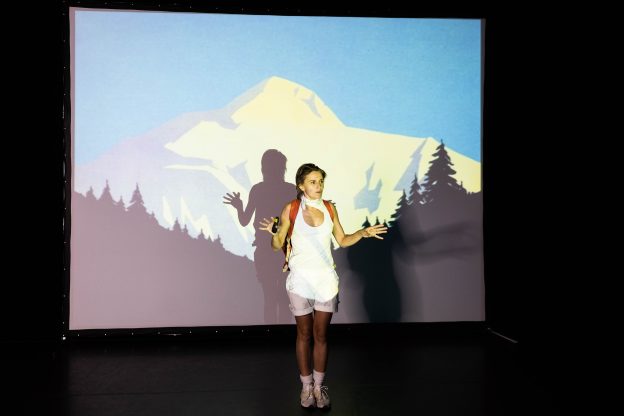
Hortense Belhôte, Et la marmotte ?
Entretien
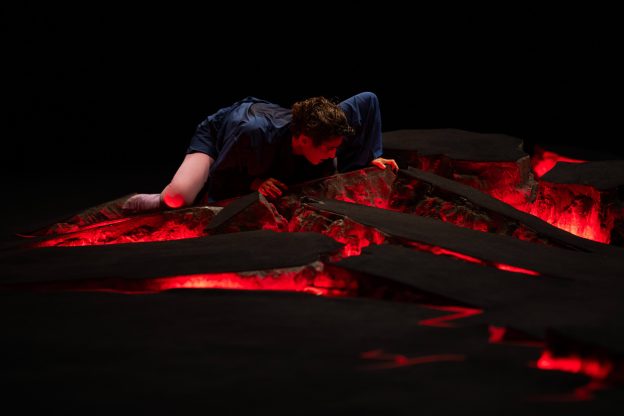
Flora Detraz, HURLULA
Entretien
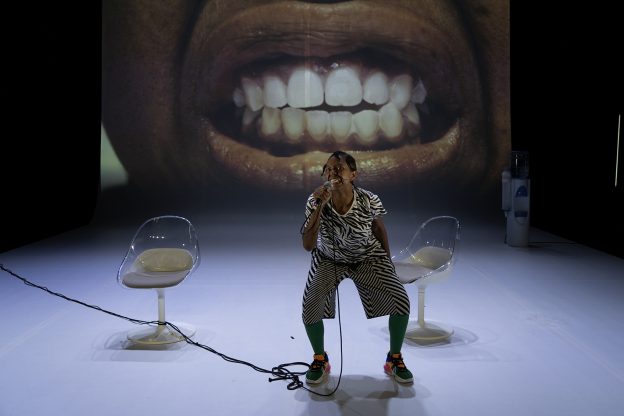
Julian Hetzel & Ntando Cele, SPAfrica
Entretien
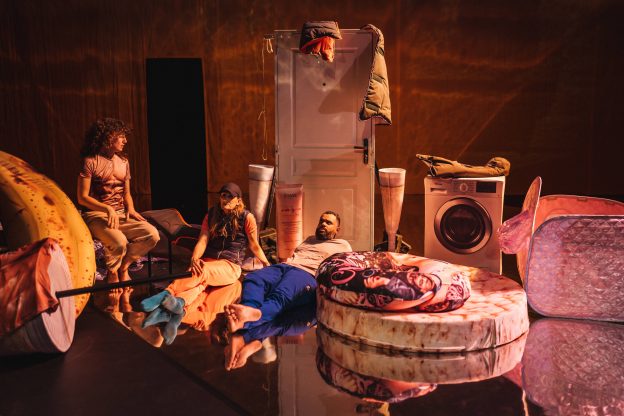
Hélène Iratchet, Les Délivrés
Entretien
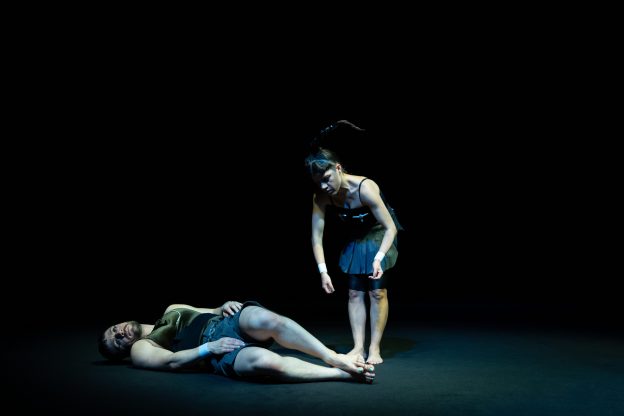
Michelle Mourra, Lessons for Cadavers
Entretien
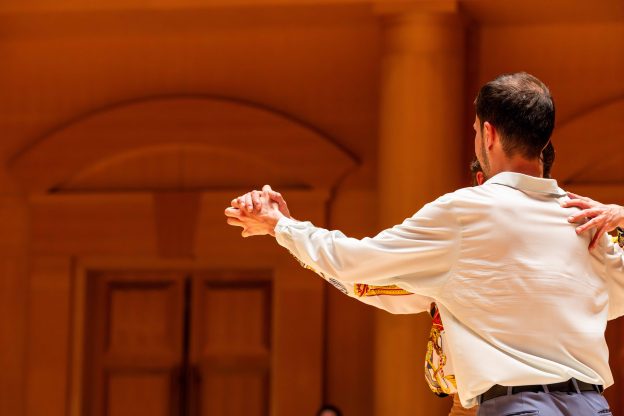
Alessandro Sciarroni, Save the last dance for me
Entretien
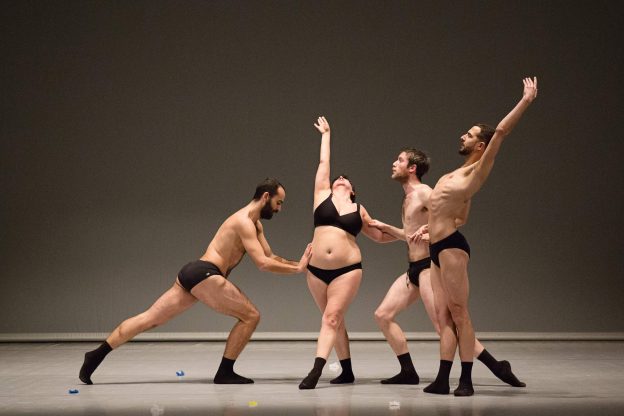
Silvia Gribaudi, Graces
Entretien
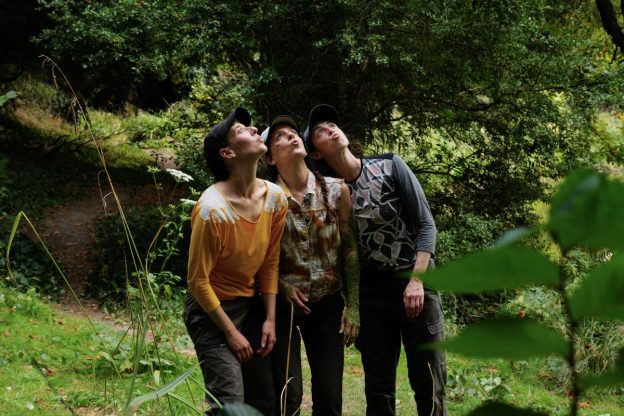
Laura Kirshenbaum, In the Garden
Entretien

François Gremaud, Carmen.
Entretien
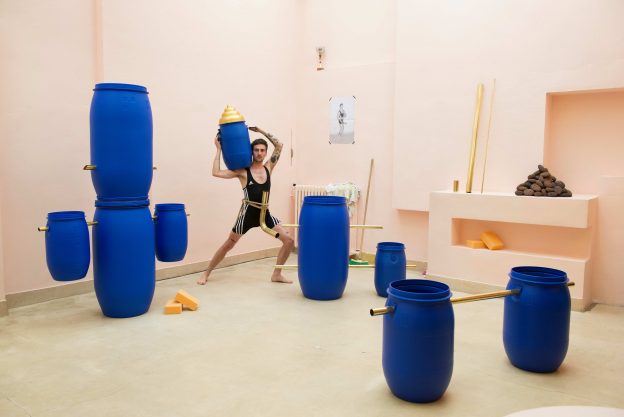
Arthur Hoffner & Grégoire Schaller, Deep Water
Entretien
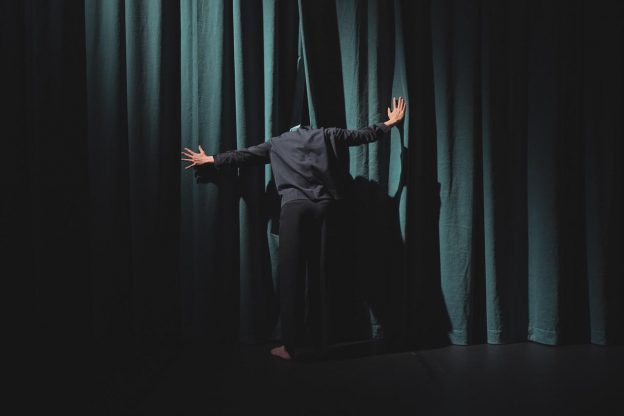
Mathilde Bonicel, Mathilde Bonicel
Entretien
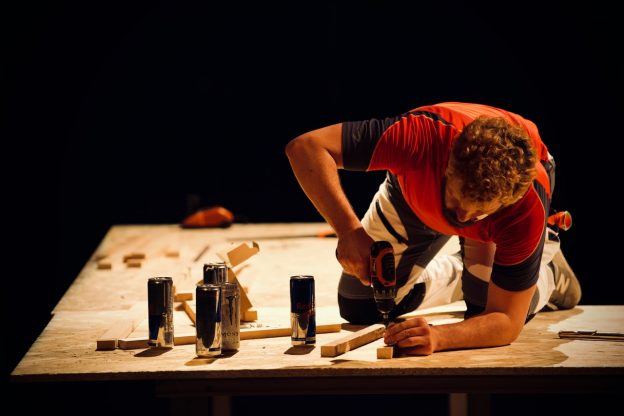
Bryan Campbell, Deep Cuts
Entretien
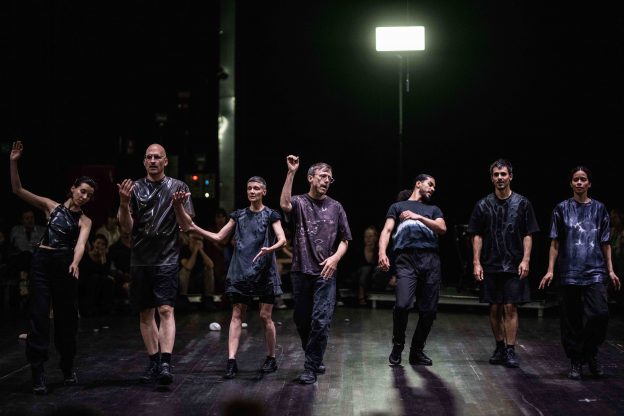
Ula Sickle & Tom Pauwels, Holding Present
Entretien
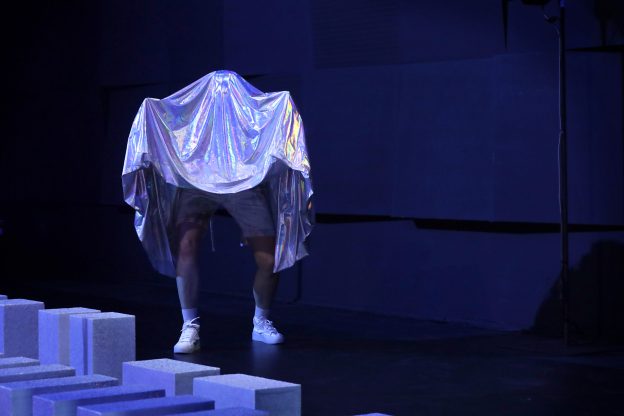
Léa Drouet, J’ai une épée
Entretien
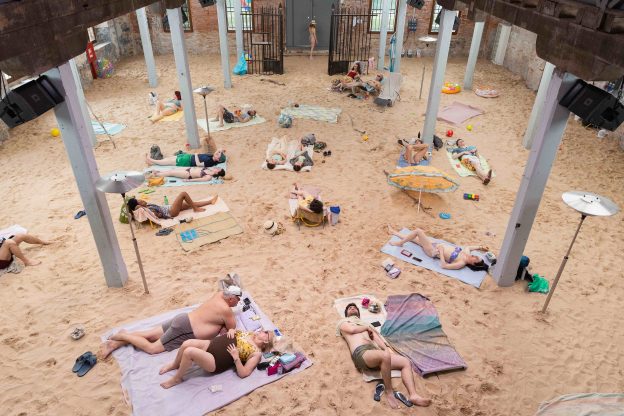
Rugilė Barzdžiukaitė, Vaiva Grainyt & Lina Lapelytė, Sun & Sea
Entretien
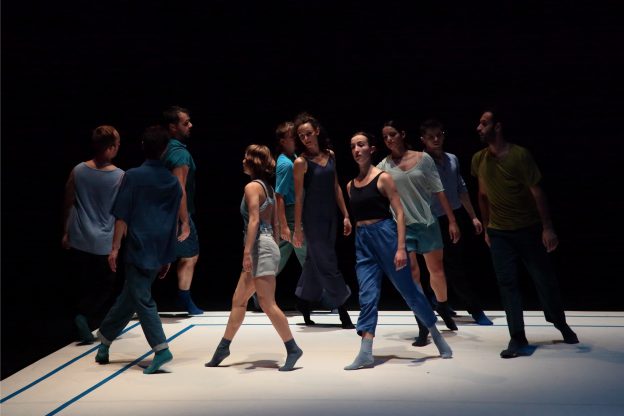
Bruno Benne, Rapides – water music
Entretien
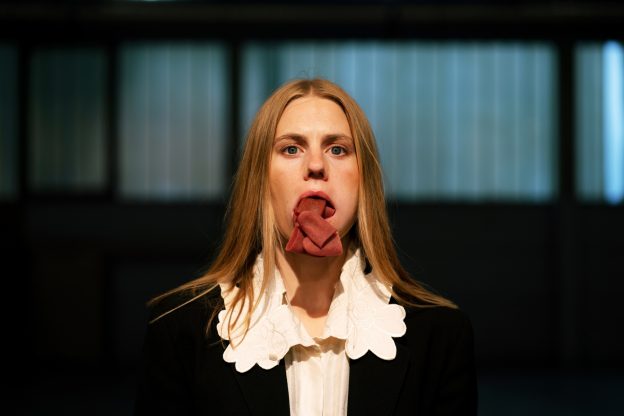
Stina Fors, A Mouthful of Tongues
Entretien
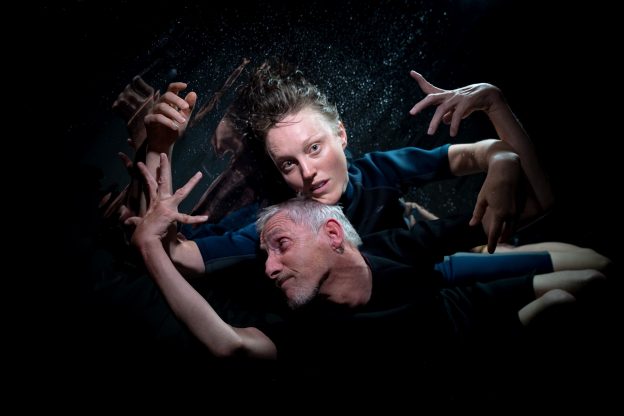
Renae Shadler & Roland Walter, SKIN
Entretien
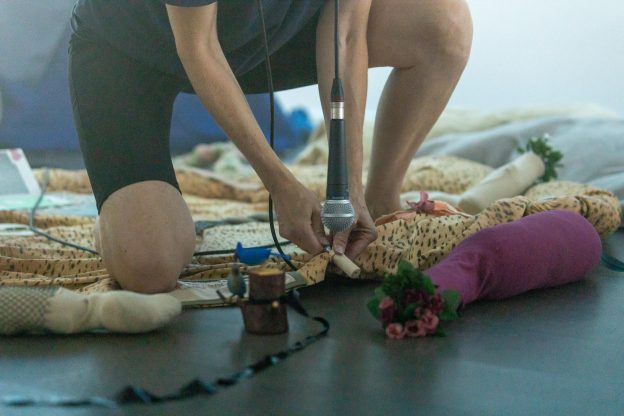
Anne-Lise Tacheron, Safety Station
Entretien

Catol Teixeira, Zona de derrama
Entretien

Filippo Andreatta, Frankenstein
Entretien
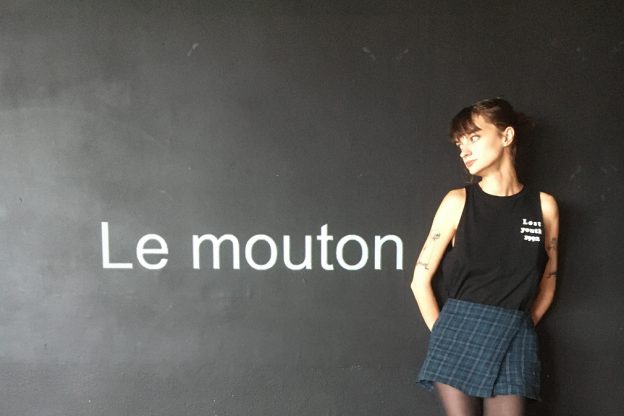
Marion Thomas, Faire troupeau
Entretien
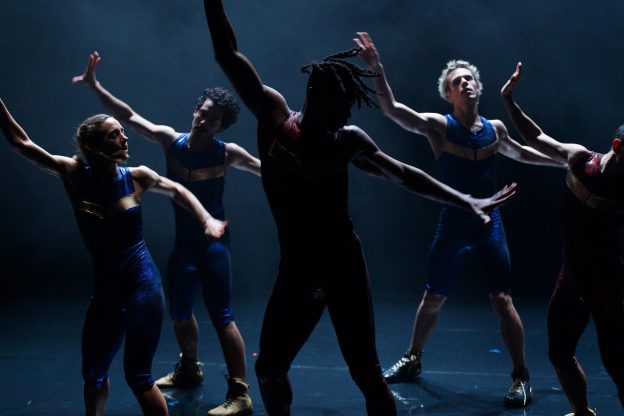
Paula Rosolen, 16BIT
Entretien
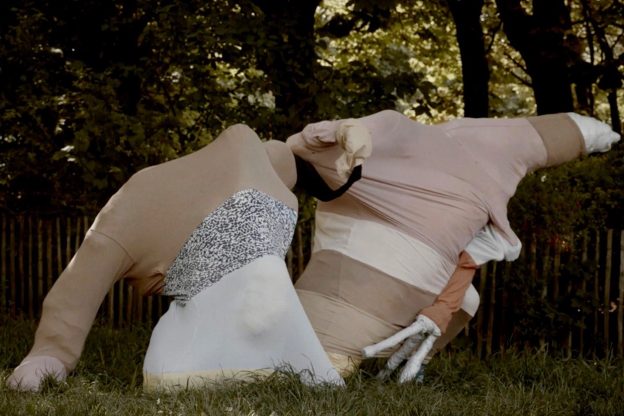
Tie-Tool, Pauline Brun & Marcos Simoes
Entretien
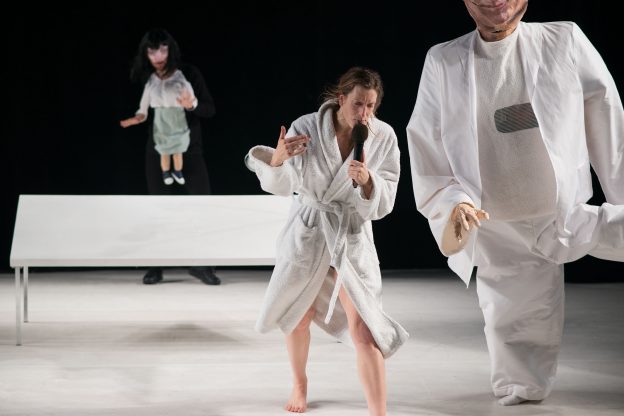
Cécile, Marion Duval & Luca Depietri
Entretien
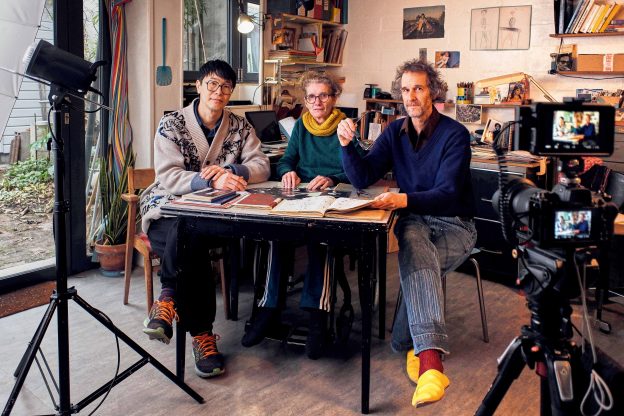
Martine Pisani & Michikazu Matsune, Kono atari no dokoka
Entretien
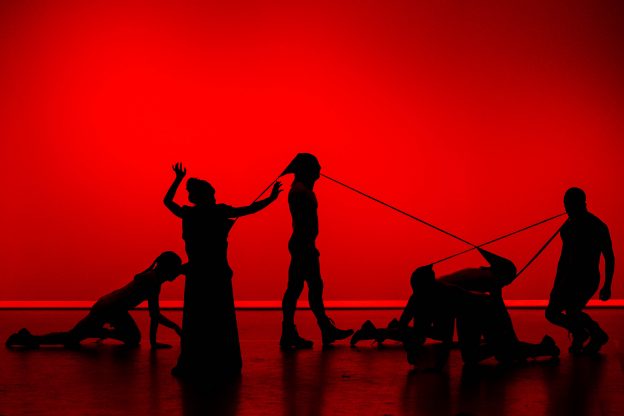
Marina Otero, Fuck Me
Entretien
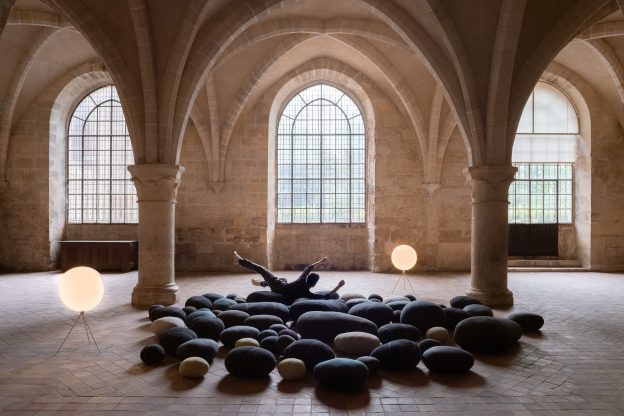
Massimo Fusco, Corps sonores
Entretien
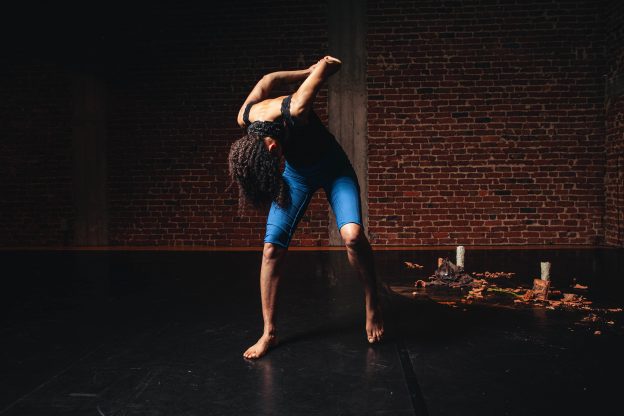
Water, l’atterrée des eaux vives, Castélie Yalombo
Entretien